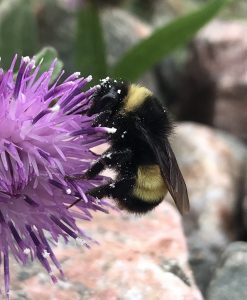The emergence of bumble bees in spring is something that naturalists look forward to. These large, fuzzy, flying insects buzzing about the garden is a sign that life has once again returned after a long period of dormancy and rest. This sign of hope is welcome year after year for everyone who enjoys the wonderful world around us.
The world is changing and human activity has resulted in tremendous changes to the natural environment on a global scale. Things such as climate change, pollution, industrial agriculture, and pesticide use have put bumble bees in danger and it is up to us to make things right again.
The goal of this Guide is to teach you the basics about bumble bees so that you can act as an advocate for bumble bee conservation in your community. You will learn about bumble bee life cycles, anatomy structure, identification, threats, and more. You’ll even learn a few ways to make a difference for bumble bees in your own backyard!
We need people like you to call attention to the threats bumble bees are facing. If we all work together to create small changes in our daily lives, we can make a big difference when it comes to the survival of bumble bees.

A change in the average conditions — such as temperature and rainfall — in a region over a long period of time (Source: NASA Climate Kids. Visit Site.)
Large scale farming practices that are often harmful to the environment due to pesticide use and the use of heavy machinery that run on fossil fuels. These practices, require a large amount of water, lower biodiversity, and can deplete soil nutrients.
A harmful substance that kills living things such as plants, insects, or fungi. These chemicals are often used in industrial agriculture practices.

